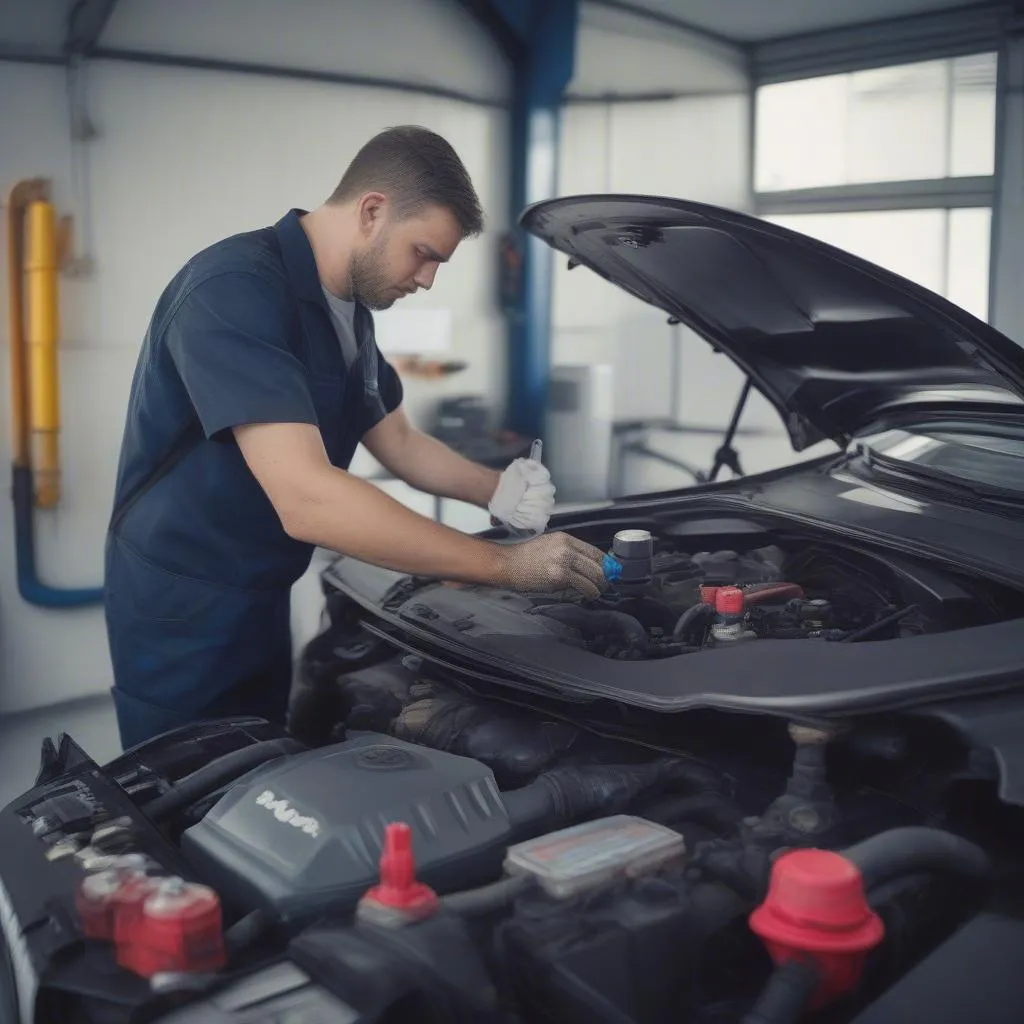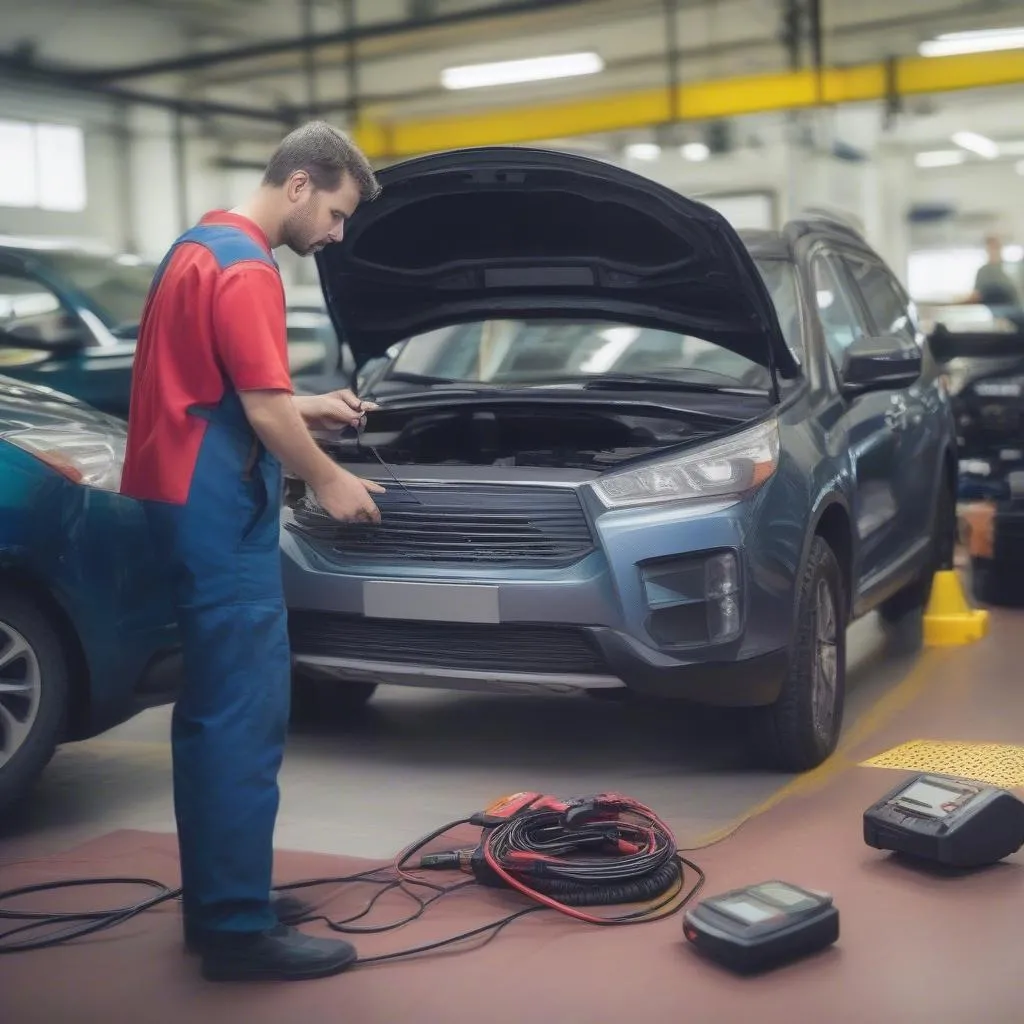Have you ever been driving down the road, feeling the heat rising from your car’s engine, only to see a warning light pop up on your dashboard? You probably felt a jolt of anxiety, wondering what the problem was and whether you could keep driving. If you’re seeing a warning light that’s related to the cooling system, it could be a sign that there’s a serious issue. Let’s dive into the world of OBD error codes related to the cooling system in European cars and learn how to understand and fix them.
Understanding OBD Errors Related to the Cooling System:
The Importance of OBD Error Codes
OBD (On-Board Diagnostics) is a standardized system in vehicles that allows us to understand what’s going on under the hood. When there’s a problem, the vehicle’s onboard computer sends out a signal, creating an error code. These error codes are like secret messages, providing us with valuable information about what’s malfunctioning.
The Role of the Cooling System in a Car
The cooling system is essential for the life of your engine. It’s like the car’s circulatory system, responsible for removing excess heat. When the engine operates, it generates a lot of heat, and the cooling system uses coolant to absorb this heat and transfer it away. Here’s how the system works:
- Coolant: This specially designed liquid circulates through the engine and radiator.
- Radiator: The radiator is where the hot coolant is cooled down by air flowing through it.
- Water Pump: This pump circulates the coolant, ensuring it reaches all the parts of the engine.
- Thermostat: This device controls the flow of coolant to the radiator, ensuring that the engine reaches its optimal operating temperature.
- Sensors: These sensors monitor the temperature of the coolant and send signals to the computer to adjust the system’s operation.
Types of OBD Errors Related to the Cooling System
OBD errors can range from minor to critical. Here are some of the common error codes related to the cooling system:
- P0128: Coolant Thermostat (Coolant Temperature Below Thermostat Regulating Temperature): This error indicates a problem with the thermostat, possibly a stuck open or closed thermostat.
- P0115: Coolant Temperature Sensor Circuit Malfunction: A faulty sensor might be sending inaccurate temperature readings, leading to the error.
- P0118: Coolant Temperature Sensor 2 Circuit Malfunction: Similar to P0115, this error points to a problem with the second coolant temperature sensor.
- P0125: Coolant Temperature Sensor Circuit Low Input: This error suggests that the sensor is detecting a lower temperature than it should.
- P0116: Coolant Temperature Sensor Circuit High Input: This error points to a sensor reading a higher temperature than expected.
- P0119: Engine Coolant Temperature Sensor Circuit Intermittent: The sensor is experiencing an intermittent issue, causing fluctuations in the temperature readings.
- P0117: Coolant Temperature Sensor Circuit Range/Performance Problem: The sensor isn’t functioning within its expected range or is experiencing performance issues.
- P0127: Coolant Temperature Sensor Circuit Open: This error indicates an open circuit in the sensor’s wiring.
- P0126: Coolant Temperature Sensor Circuit Short to Voltage: A short in the sensor’s wiring is causing a short circuit to the voltage supply.
- P0129: Coolant Temperature Sensor Circuit Short to Ground: A short circuit to the ground is affecting the sensor’s wiring.
Decoding OBD Errors and Troubleshooting
How to Decode Error Codes
Decoding OBD errors is a crucial step. You can use a specialized tool called a Dealer Scanner. Dealer scanners are specialized tools that plug into your car’s OBD port and provide detailed information about the error codes. They can also be used to clear the codes after repairs are made.
Troubleshooting OBD Errors Related to the Cooling System
Here are some common steps you can take to troubleshoot these errors:
- Check the Coolant Level: Ensure your coolant level is within the appropriate range. Top it off if necessary.
- Inspect the Thermostat: The thermostat regulates the flow of coolant. If it’s stuck open or closed, it can cause problems.
- Check the Coolant Temperature Sensor: Test the sensor with a multimeter to see if it’s functioning correctly.
- Look for Leaks: Inspect hoses, pipes, and the radiator for any leaks that could cause coolant loss.
- Inspect the Water Pump: Ensure the water pump is functioning properly and is not leaking.
- Clear the OBD Codes: Once you’ve addressed the underlying issue, clear the error codes with your Dealer Scanner.
Common Questions About OBD Errors Related to the Cooling System
What Happens If I Ignore a Cooling System Error?
Ignoring a cooling system error can have serious consequences for your car. Overheating can lead to engine damage, including warped cylinder heads, cracked engine blocks, and even a blown head gasket.
Can I Drive My Car With a Cooling System Error?
In some cases, you can drive your car with a cooling system error. However, it’s best to err on the side of caution. If the warning light is on, it’s a good idea to pull over and assess the situation. If you have a minor leak, you might be able to make it to a mechanic, but you should avoid driving for extended periods, especially in hot weather.
How Often Should I Check My Coolant?
It’s a good idea to check your coolant level at least once a month, or more frequently if you’re driving long distances or in hot weather.
How Can I Prevent Cooling System Problems?
Regular maintenance is key to preventing cooling system problems. This includes:
- Regular Coolant Flushes: Flush your coolant every 30,000 to 60,000 miles.
- Hose and Belt Inspections: Inspect hoses and belts for cracks or leaks.
- Thermostat Replacement: Replace your thermostat every 50,000 to 100,000 miles.
Need Help with OBD Error Codes?
Don’t hesitate to reach out for help. We can provide you with expert advice and assistance in understanding and troubleshooting OBD error codes, especially those related to the cooling system. Our team is here to provide support 24/7 via Whatsapp: +84767531508.
In Conclusion
Understanding OBD errors related to the cooling system is critical for maintaining your car’s health and safety. By knowing the common error codes, troubleshooting steps, and the importance of regular maintenance, you can keep your car running smoothly and avoid costly repairs. If you need any assistance, don’t hesitate to reach out to us for help!
 Cooling System Check
Cooling System Check
 OBD Scanner
OBD Scanner
 Coolant Leak
Coolant Leak